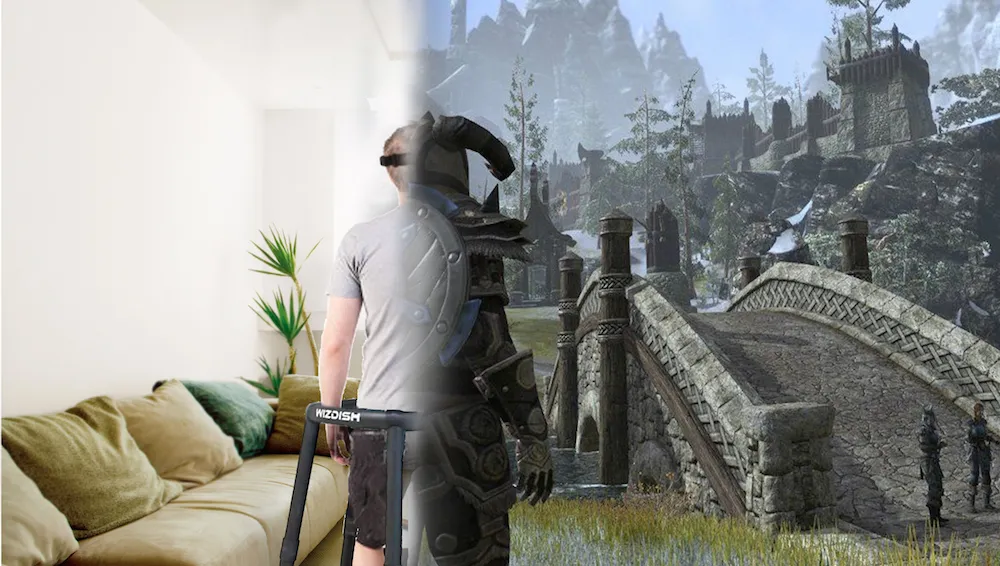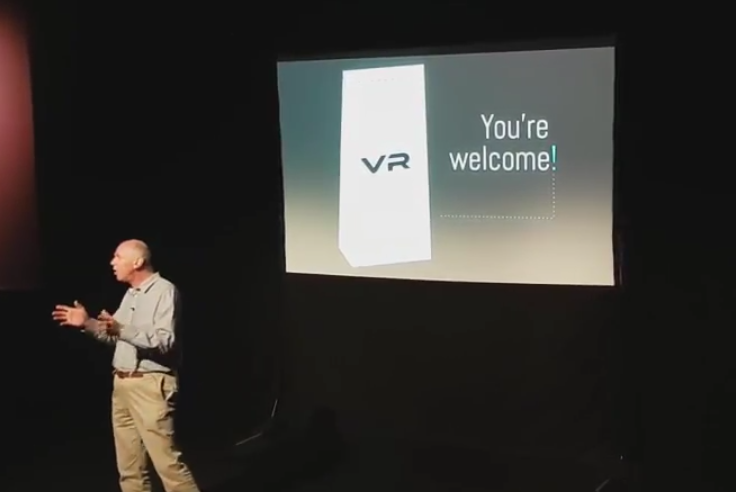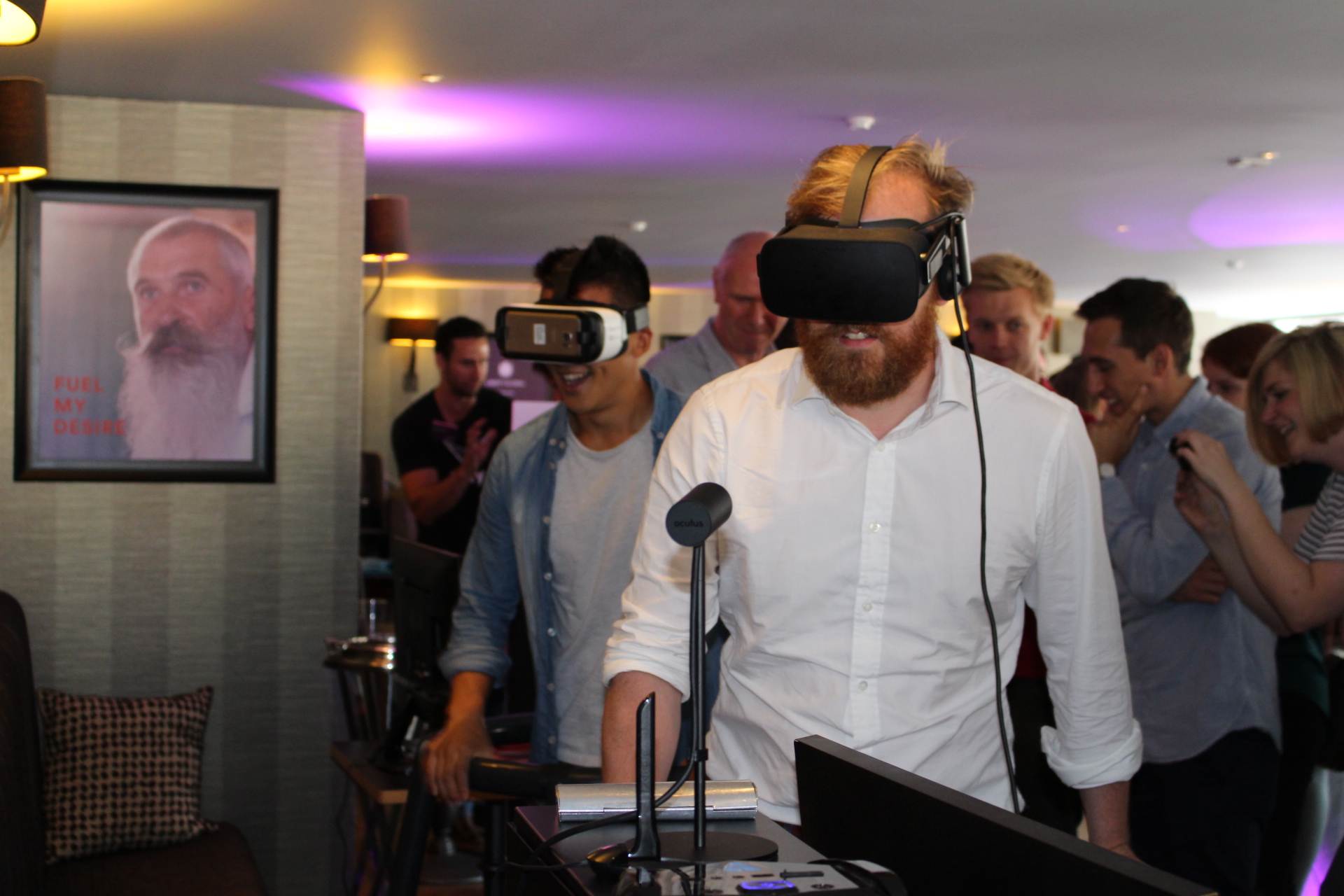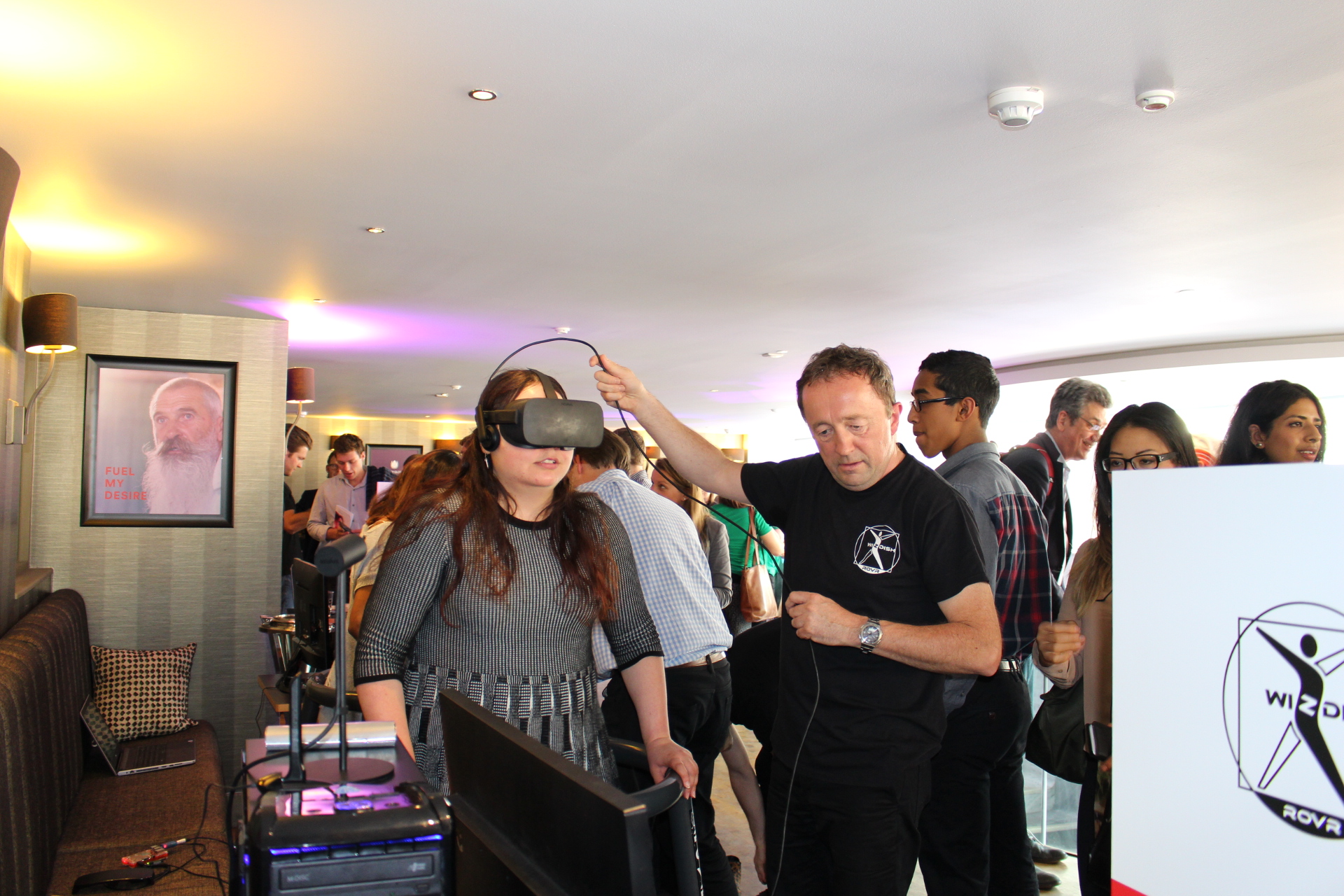Suppose you’re playing a game like Fallout 4 in VR. In the real world you’re sitting down, but in the virtual one you’re running away from an oversized cockroach, desperately trying to stay alive. Bethesda is working on their own iteration of their iconic series, but not all first-person shooters are being remade with VR in mind.
Sitting while playing but running in the virtual world creates a massive disconnect between what you see and what you actually feel. Because the two don’t match, the gaming experience is disturbed. That same disconnect is what causes two thirds of us to experience some form of VR-related nausea, according to Dr. Charles King, Co-founder of Wizdish.
“Simulation Sickness is real, and you will throw up…which could of course be a severe impediment to the rise of the VR market,” Dr. King told the audience at Virgin Media’s Techstars demo day in London. His Oxford-based company recently graduated from the prestigious accelerator and is now gearing up for a crowdfunding campaign to finance the development of a consumer version of their product.
That product is called the ROVR which consists of both a platform and shoes that allow you to “walk” freely in virtual environments, supported by an enclosing frame that stops you from bumping into things or falling over. Although there were a few near misses in my demo — it feels quite slippery.
For a relatively early prototype, Wizdish’s client list is certainly impressive. They have sold to over 100 brands in 20 countries including Nissan, Wells Fargo, and The British Army. But although they have clearly been successful in their B2B strategy, and claim that over 30,000 people have already used the product, their sights are now set on a much more ambitious target.
https://www.youtube.com/watch?v=1q_fw9mD_Os
“In 2013 there were less than 1,000 head-mounted VR displays sold worldwide, so it made sense for us to work with companies that had their own development capacity,” says Dr. King. “This year, however, there will be 12 million HMDs sold. By Christmas 2017 — when we’ll be ready to launch the next version of the ROVR for the consumer market — there will be 500 million headsets out there, and projections for 2020 are in the region of 2 billion.”
A big part of the reason why people are so keen to try immersive VR is precisely because of the intensity of those experiences, but there are big questions around whether our bodies can actually handle the potential side effects. Some experts have actually gone so far as to argue for the banning of VR headsets, at least until we know more about the long-term effects of prolonged exposure.
“Walking is the best and most immersive way of experiencing both the real world and the virtual world; because you’re moving in sync with what you’re seeing, it solves the simulation sickness problem,” says Dr. King.
“Cyber sickness seems to be caused by a disparity between what the brain expects or anticipates and what the sensory system is telling the body,” explains Wizdish Co-founder Julian Williams. “Some of this is caused by latency and can be due to the quality of the sensors, or indeed a lack of sensors. Positional tracking detects where your head is in space and if it’s absent (as with the Oculus DK1, Gear VR, or Google Cardboard) just moving your head around can induce nausea. These are less of a problem on the ROVR as it rewards good balance, posture, and core stability by keeping your center of gravity in one place.”
Another major cause for the problem is disparity between your visual and vestibular senses, which can be described as the ‘inner ear problem’. It’s what makes you feel sick when you spin quickly on the spot.
“If your vision rotates when you head doesn’t, or by a different amount, most people feel ill very quickly. This is why traditional gamepads can cause significant problems when you use the joysticks for navigation,” explains Williams.
Our sensitivity to forward motion is usually less pronounced, especially if you gaze at the horizon — a trick I remember well from my constant battles against carsickness as a child. But it does vary a lot from person to person. As hinted above, I’m quite prone to nausea, whereas others might have a much higher tolerance to what sends me reaching for the sick bag. Interestingly, Oculus also found in their own research that there isn’t much consistency regarding which games cause nausea, as different people can react differently to different games.
“The most important fact about walking for us is that you don’t think about it,” says Williams. “You probably don’t remember walking to where you are now. We found that as long as you move your legs to traverse after a while you push that to the back of your mind and only concentrate on where you’re going — not how you move. This is the simple psychological trick that makes the ROVR so effective. When you first get on just the action of moving your feet around feels fun too. We have made sure that the ROVR does what it does extremely well. It may take a few people a little while longer to acclimate to it, as we all have different levels of physical confidence. We found that some experience of skating usually helps, but almost everyone can use the ROVR sufficiently very quickly.”
https://www.youtube.com/watch?v=e3TUYnCajL8
If you’re familiar with the VR ecosystem, chances are you’re aware of other treadmills on the market. The Virtuix Omni, for example, is probably the most well-known of the bunch. When I asked Williams how the ROVR compares to other treadmills, such as the aforementioned Virtuix Omni, he explained their product is much smaller, lighter, and easier to use.
“You don’t need to wear a harness or any special clothing, plus you can just put the kick-on overshoes over your normal trainers or similar footwear, which makes for a much better user experience,” says Williams. “We also have the patent for using a low friction dish design, which we haven’t licensed to anyone, and we’re first to market, already shipping to over 20 countries.”
Williams says that many people reported not feeling cyber sickness for the first time when using the ROVR. They believe that their solution, combined with mobile VR positional tracking, could largely solve the nausea problems in walking games, and they’re hopeful Google will include it in its Daydream spec.
“What we won’t do is add functionality that’s a compromise, such as leaning in order to walk, or kludges to allow for things like strafing,” says Williams. “We find that people prefer to understand and use the device within its limits rather than finding that it can’t do other things especially well. Taking strafing as an example, you might let people swing one leg to indicate this intention, but unless your body moves sideways to match the vision you can still induce nausea.”
They’re now taking the feedback from their B2B clients into the next phase of development for the ROVR 2, which will be a small, lightweight and collapsible version of their current prototype, although at this early stage they can’t yet say how much that will cost. But considering how much people are already spending on VR, the price of a vomit-free ride seems well worth a few extra bucks.
—
Alice Bonasio is a freelance writer with work appearing in well-known publications such as The Huffington Post, Newsweek, Playboy, and more. You can follow her on Twitter: @alicebonasio.





























